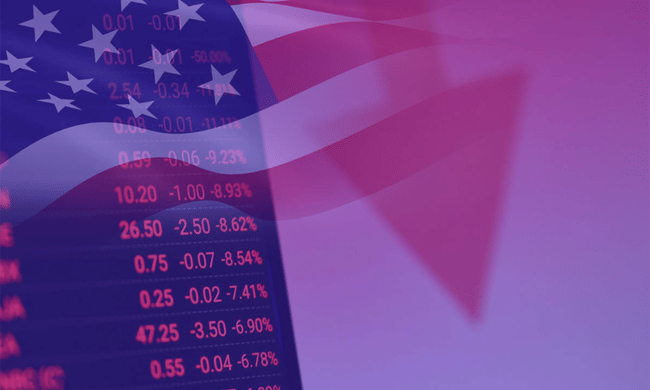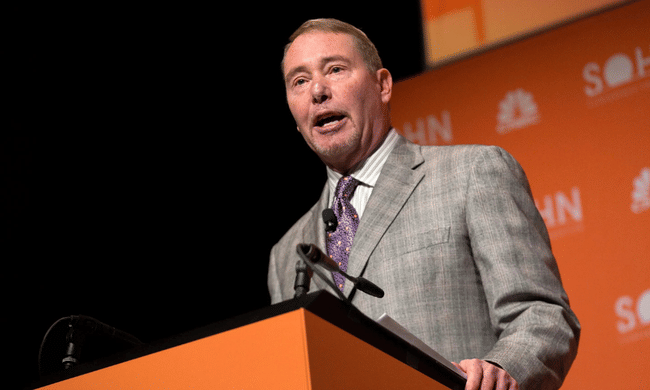The US credit market is in turmoil. Silicon Valley Bank and Signature Bank, have run into trouble, raising fears of a possible credit crunch and economic recession. Interest rates are rising steeply, banks are facing an outflow of deposits and consumers feel it is increasingly difficult to get a loan. All this signals that banks are likely to tighten lending conditions, which could damage the whole economy. If the situation does not improve, the US could plunge into recession.

The four months of 2023 have grown into fears of a possible credit crunch after the March collapse of Silicon Valley Bank and Signature Bank.
Prominent commentators, including economist Nouriel Roubini, known as "Dr. Doom," Bill Gross and Jeffrey Gundlach, have warned that signs of a credit crunch are emerging - and it could eventually trigger a recession.
Americans are already feeling the strain. A survey of consumer expectations conducted by the New York Fed found that a growing number of American households believe their access to credit has worsened, with the proportion of respondents saying so reaching a new high.
"There is likely to be a tighter credit environment because of the stress in the banking sector," said Daniele Antonucci, chief economist at Quintet.
"Whether this qualifies as a full-blown 'credit crunch' remains to be seen. While we would describe it as more of a 'credit squeeze' at the moment, there is a risk that if it is not brought under control it could turn into something broader," he added.
The credit crunch has meant a dramatic reduction in bank lending to consumers and businesses, making credit harder to get and more expensive.
So what's causing fears of a credit crunch?
Banking turbulence: The recent collapse of Silicon Valley Bank and Signature Bank due to an influx of withdrawals has raised concerns that U.S. regional banks could also run into trouble.
Depositors are rushing to transfer their funds from regional banks to money market funds, which typically offer higher returns and are perceived as safer than uninsured deposits. In the week ending March 15, approximately $120 billion in deposits were withdrawn from small banks, an insanely large number.
The outflow of deposits has sparked fears among investors that regional banks could be hit by a "run on the banks" and cautious lenders could pull back to make sure they are not overexposed, leading to a credit crunch.
Higher Interest Rates: Higher interest rates are a dual catalyst for the U.S. credit crunch. The Federal Reserve has raised interest rates to 5% from near zero 12 months ago - the sharpest rise in U.S. borrowing costs since 1980 - to tame rising inflation.
Higher interest rates, which played a role in SVB's collapse by reducing the value of its bond portfolio, have stoked fears that other mid-sized and smaller lenders face similar risks, leading to a run on deposits. According to JPMorgan, approximately $1 trillion in deposits have been withdrawn from "America's most vulnerable banks" since the Fed began raising interest rates in March 2022. This could lead banks to tighten their lending standards.

"Bond Kings" Gross and Gundlach echoed this view, noting that higher interest rates have reduced the value of bank bonds and other assets and exposed lenders to greater risk of loan defaults, particularly in commercial real estate."
A 450 basis point and further rate hikes in 12 months will necessarily affect balance sheets that use proper accounting - duracy and credit," Gross said.
Higher interest rates have also increased borrowing costs. That's worrisome for banks because borrowers facing higher costs may not be able to repay their loans - and that could lay the groundwork for banks to tighten lending standards.
"But let's admit that we don't know how much the wave of bank failures that have already occurred will lead to an overall decline in lending. And I don't expect the Fed to start cutting rates until December 2023, and we could see more problems in the meantime," he said.
Fed uncertainty: The possibility of tighter lending complicates the Fed's job because it creates uncertainty about the economy's sensitivity to changes in monetary policy, said Preston Caldwell, chief U.S. economist at Morningstar
Recession risks: The sharp rise in interest rates already threatens to stifle growth in the U.S. economy because it has raised borrowing costs and encouraged saving instead of spending, investing and hiring new
If credit "dries up," it could weigh on the value of stocks, real estate and other assets and cripple aggregate demand - a recipe for a painful recession. In addition, if a credit crunch leads to a sharp rise in non-performing loans and bankruptcies as financing opportunities evaporate, it could hit banks and the broader financial system and exacerbate the economic downturn.
In sum, a credit crunch could have devastating consequences. If the number of loans were to decline or put people in harm's way, it would cripple the U.S. economy by reducing demand, investment, and growth. Moreover, if it led to a wave of non-performing loans, it could cause problems in the banking sector.
Most observers of this situation believe that the banking system is more resilient than during the financial crisis and that the Fed has tools such as stress tests and standby credit lines to ease any strains. Nevertheless, the threat of a credit crunch remains real and requires careful monitoring.
Please note that this is not financial advice. Every investment must undergo a thorough analysis.